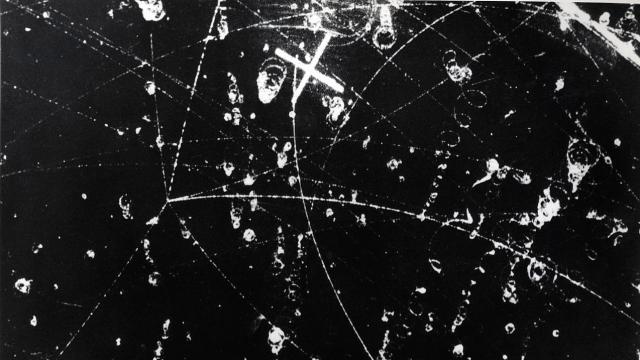Bad news: Humans will probably never explore the area around a black hole, at least while you’re alive. That’s mostly because most black holes are too far away, and even if we could travel to them, it’s unlikely we’d survive their gravitational pull. That means that if we want to study the wacky effects extreme gravity might have, we’ve gotta get creative — which is exactly what an international team of physicists have just done.
Image: US DOE/Public Domain
Those physicists are now reporting a so-called “gravitational anomaly” in a special kind of material, called a Weyl semimetal. The paper’s results and experimental setup could have important applications in the near future — the authors told me it might let you one day charge a phone by rubbing it on your leg. But others were most excited about how the relatively new Weyl semimetals will allow for observations of gravitational effects in these strange models.
“It’s really the first time ever to see it within an experiment, even though it is only by the analogy,” Subir Sachdev, a Harvard physics professor who was not involved in the study, told Gizmodo. “Nevertheless, in all of physics, no one has seen anything like this.”
“Gravitational anomaly” refers to an effect the shape of spacetime itself can have on the behaviour of “fermions”, the category of particles that includes electrons. All particles come with an innate property called “spin”, and in electrons, scientists observe that value as “up” or “down”. On top of that, if fermions have no mass, they should always be moving, according to the laws of physics — that’s just what massless things do. The spin can then point in either the same direction or the opposite direction that the particles are moving — this is called “chirality”, or handedness. Gravitational anomaly says that changes in the shape of space can cause an imbalance in this handedness.
No, scientists can’t change the shape of spacetime in a lab. Instead, they needed a really good analogue for a massless fermion travelling through a warped spacetime. A special kind of crystal called a Weyl semimetal served as “space”. Weyl semimetals are special because their electrons behave as if they were massless, always moving, explained Karl Landsteiner from the Autonomous University of Madrid. They added a temperature gradient which was meant to stand in for gravity, and watched as the symmetry broke — the particles’ handedness swapped, resulting in an imbalance in the chirality. The researchers published their results today in the journal Nature.
“So what it tells us about the world is that the gravitational anomaly effect might exist,” study author Johnannes Gooth from the University of Hamburg and IBM Research told Gizmodo.
What the heck, you might think — temperature and gravity aren’t the same thing. This might even remind you of last year’s experiment where a scientist seemed to prove that black holes radiate, but used sound waves instead of real particles. But the scientists I spoke to, both those involved and outside sources, assured me that Albert Einstein’s theories imply that the temperature gradient and the energy gradient in gravity can be treated similarly. If something works for one, it should work for the other.
“No one doubts the analogy between energy radiance and gravitational fields,” Sachdev told me. “This is pretty good as far as I’m concerned.” And observing the effect with gravity would be more or less impossible. “You’d need a strong gravitational field,” Sachdev said. “You’d probably have to go near a black hole, which no one has ever done.”
You also might wonder why IBM cares about this. Aside from being a cool proof that the shape of space itself can influence particles, having this level of control over the behaviour of moving electric charges could have important technological applications. There’s long been a thought that we could generate electricity simply through heat gradients, changing temperatures in some electricity-generating medium. “But this is a very inefficient process,” said Gooth. That’s because normal electrons are bad at this heat conversion process. “But we believe now with this gravitational anomaly we can circumvent certain limits and make this conversion very very efficient.”
The thought is that one day in the future, this gravitational anomaly might let you charge your phone by rubbing it against your pants. Everyone I spoke to seemed to agree that these applications were far off, and were mainly excited about the observation of this wacky behaviour in a wacky system. And there’s no limit to imagining where else it might occur.
“This [gravitational anomaly] is obeyed in all certain kinds of physical systems,” said Gooth. “It has to be obeyed in stars, the early universe or in our transistors.”
[Nature]
